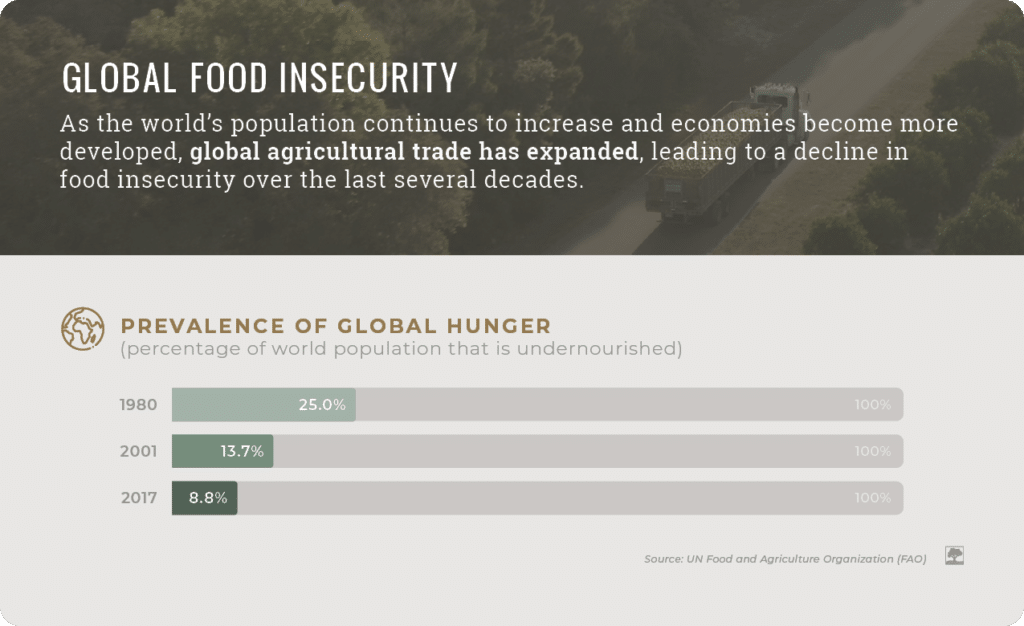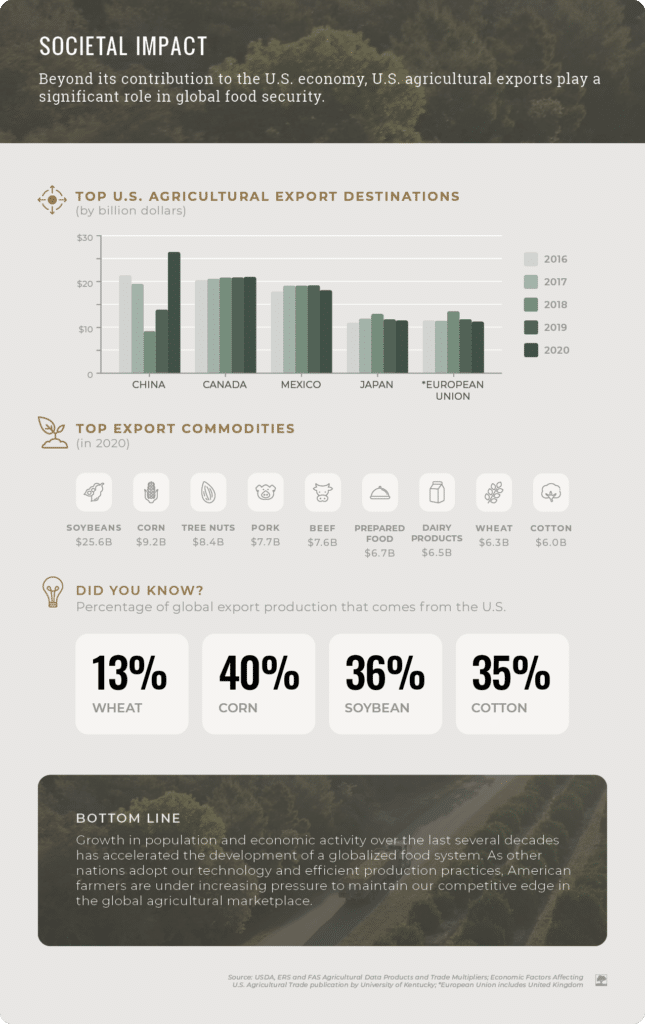New Report: Impact of U.S. Agriculture on Global Food Production
Learn more about the rise of our global food system and the role U.S. agriculture has in it.
Our international food system is a delicate balancing act of optimizing natural resources to produce food, fuel, and fiber for a growing number of people at the most affordable cost. From 1900 to 2011, the global population grew from 1.6 billion to 7 billion people. After World War II, population and economic growth combined with technological advancements spurred the rise of global food production.

As a leading agricultural producer in the world, the U.S. is a vital component in continuing the efforts to reduce global hunger. Not only that, but agricultural production is a key contributor to the U.S. economy at large—meaning U.S. ag trade is an important topic to understand to ensure policy changes support the essential efforts of our hardworking farmers and ranchers.
Keep reading to learn more about the national and global impact of U.S. agriculture along with the six main factors that influence global trade markets, according to AgAmerica’s Chief Economist and award-winning economist Dr. John Penson.
The Economic Impact of U.S. Agricultural Trade
U.S. agricultural export trade will contribute an estimated $173.5 billion to the gross national product (GDP) in 2021 and even more is expected in 2022. This economic contribution expands even more as agricultural products are turned into miscellaneous goods like clothes or prepared food, further increasing their value.

The Societal Impact of U.S. Agricultural Trade
The economic contribution of U.S. ag trade is without question, but the societal impact U.S. farmers and ranchers have in the fight against global food insecurity is of equal if not greater importance.

Influential Factors of Global Ag Trade
1. Population
Global population is expected to increase to nearly nine billion people by 2030. With this boom, more pressure is placed on farmers to produce more food, more efficiently, and with less land.
2. Price
The balancing act of supply and demand management influences the price U.S. farmers receive for their efforts. As the cost of production increases, whether it’s from shortages or logistical backlogs, the more U.S. farmers must charge to earn a living and the less competitive they become in the global market.
3. Natural Phenomenon
COVID-19 is a prime example of how uncontrollable events can lead to severe disruption to the global food supply chain. Weather, pests, and diseases all create a domino effect of disruption that can help or hinder U.S. farmers’ ability to feed the world.
4. Government Intervention
The trade relationship between the U.S. and China shows the impact of national governments on the farmer’s bottom line. Tariffs, embargos, and fair-trade agreements are all examples of how government interventions influence the competitive advantage (or disadvantage) of U.S. farmers.
5. Economic Conditions
The condition of foreign economies impacts their income elasticity and ability to buy U.S. agricultural goods. Companies experiencing higher rates of economic growth, such as China, will also likely have higher purchasing power.
6. Trade-Weighted Foreign Exchange Rates
Often said to be the most important influential piece in global trade markets, trade-weighted exchange rates fluctuate by commodity and are a leading indicator of the direction U.S. agricultural trade is headed.
The 2022 U.S. Agricultural Trade Outlook
As of now, all signs point to a strong trade outlook for U.S. agriculture in 2021 and into 2022. But one thing COVID taught us is that nothing is certain. One way American farmers and ranchers can prepare for the upcoming planting season is to stay informed on the legislative and trade developments that could directly impact their operation.
Download your free copy of Global Trade and U.S. Agriculture to learn more about how the above factors influence global ag trade along with five factors to be on the lookout for in 2022.







